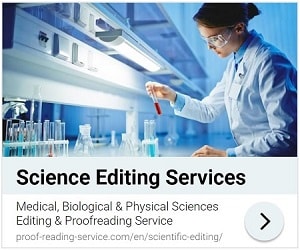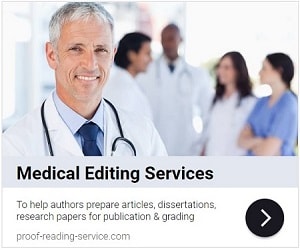Introduction
Publishing research in an academic journal is a crucial step for researchers, scholars, and students looking to disseminate their work to a wider audience. However, choosing the right journal can be a daunting task, given the vast number of options available across various disciplines. Selecting an appropriate journal is essential to maximize the visibility, impact, and credibility of your research. This article provides comprehensive guidance on journal selection, outlining key factors to consider and best practices to follow.
Why Journal Selection Matters
Selecting the right journal ensures that your research reaches the appropriate audience, meets quality standards, and has the potential to influence future studies. A well-matched journal increases the likelihood of acceptance and prevents unnecessary rejections due to scope mismatch, formatting issues, or other factors.
Publishing in the wrong journal can result in delays, wasted effort, or even reputational harm if the journal lacks credibility. Therefore, a careful and strategic approach to journal selection is essential.
Factors to Consider When Choosing a Journal
1. Scope and Aims of the Journal
Before submitting your paper, review the journal’s aims and scope to ensure alignment with your research topic. Consider the following:
- Does the journal publish research in your specific field?
- Does it focus on theoretical, empirical, applied, or interdisciplinary studies?
- Does the journal’s scope cover your study’s objectives and methodologies?
Most journals provide clear guidelines on their website detailing the types of articles they accept. Submitting to a journal outside your field can lead to rejection, even if the paper is of high quality.
2. Journal Reputation and Impact Factor
A journal’s reputation is often measured by its impact factor (IF) and indexing in major databases such as Scopus, Web of Science, and PubMed. While the impact factor is not the sole determinant of a journal’s quality, it provides an indication of its influence in the academic community.
Consider the following metrics:
- Impact Factor (IF): Measures the frequency with which articles are cited in a given year.
- h-index: Indicates the productivity and citation impact of the journal.
- CiteScore: Another citation-based measure available in Scopus.
Publishing in high-impact journals can enhance your academic profile and increase the visibility of your research.
3. Open Access vs. Subscription-Based Journals
Journals can be broadly classified into two categories:
- Open Access Journals: Allow free access to published articles, making research widely available. However, many open-access journals charge article processing fees (APCs).
- Subscription-Based Journals: Require institutional or individual subscriptions to access articles. These journals may not charge authors but can limit readership due to access restrictions.
Weigh the benefits and costs of open access based on your research funding and the importance of wider accessibility.
4. Review Process and Publication Speed
Different journals have varying review and publication timelines. If you need a quick turnaround, consider:
- Review Timeline: How long does the peer-review process take? Some journals take weeks, while others take several months.
- Publication Frequency: How often does the journal publish issues? More frequent publication increases the chances of quicker dissemination.
- Types of Peer Review: Double-blind, single-blind, or open review formats may impact the rigor and transparency of the review process.
Fast-track options may be available for urgent submissions, but these often come with additional fees.
5. Acceptance Rate and Selectivity
Highly prestigious journals tend to have low acceptance rates due to high submission volumes and rigorous peer-review standards. While publishing in a selective journal can be rewarding, it also increases the likelihood of rejection.
Some journals publish their acceptance rates on their website. If a journal has a very low acceptance rate (e.g., below 10%), consider whether your research is competitive enough before submitting.
6. Indexing and Visibility
For your research to have maximum impact, ensure that the journal is indexed in major databases such as:
- Scopus
- Web of Science (SCI, SSCI, ESCI)
- PubMed
- Google Scholar
- DOAJ (for open-access journals)
Journals indexed in these databases tend to have higher visibility, credibility, and citation potential.
7. Ethical Standards and Avoiding Predatory Journals
Beware of predatory journals that lack rigorous peer review and primarily exist to profit from author fees. To identify legitimate journals, consider:
- Is the journal listed in recognized databases?
- Does it have a transparent peer-review process?
- Are the editors and reviewers credible researchers in the field?
- Is it a member of COPE (Committee on Publication Ethics)?
- Does it appear in Beall’s List of predatory journals?
Predatory journals often promise quick publication with minimal review but can damage your academic reputation.
Steps to Choosing the Right Journal
Step 1: Create a List of Potential Journals
Start by identifying 5–10 journals that align with your research topic. Use tools such as:
- Journal Finder tools (Elsevier Journal Finder, Springer Journal Suggester, etc.)
- Google Scholar search for similar research articles and their journals
- University library recommendations
Step 2: Compare Journal Guidelines and Requirements
Once you have a list, review each journal’s author guidelines. Consider:
- Word count and formatting requirements
- Citation style (APA, MLA, Chicago, etc.)
- Specific data presentation styles (tables, figures, supplementary materials)
Step 3: Assess Your Research Quality and Fit
Match your paper’s depth and scope with the journal’s typical publications. Consider:
- Theoretical vs. applied research orientation
- Methodological similarities with published papers
- Citation and referencing trends within the journal
Step 4: Check Submission and Fees
Ensure that:
- The submission process is clear and straightforward
- The journal does not have excessive article processing charges (APCs) unless justified by high visibility and indexing
- Any publication fees are within your budget or covered by institutional funding
Step 5: Submit and Track Your Paper
After selecting the journal:
- Format your paper according to journal requirements
- Write a compelling cover letter explaining why your paper is a good fit
- Submit and track your paper through the journal’s submission portal
- Be prepared to revise based on reviewer feedback
Conclusion
Choosing the right journal for your research requires careful consideration of factors such as scope, impact factor, review process, accessibility, and ethical standards. A well-selected journal ensures that your work reaches the right audience, gains recognition, and contributes meaningfully to your field.
By following a systematic approach to journal selection, researchers can enhance their chances of publication success while avoiding unnecessary delays and ethical pitfalls. Investing time in this process ultimately leads to a more rewarding and impactful academic publishing experience.














